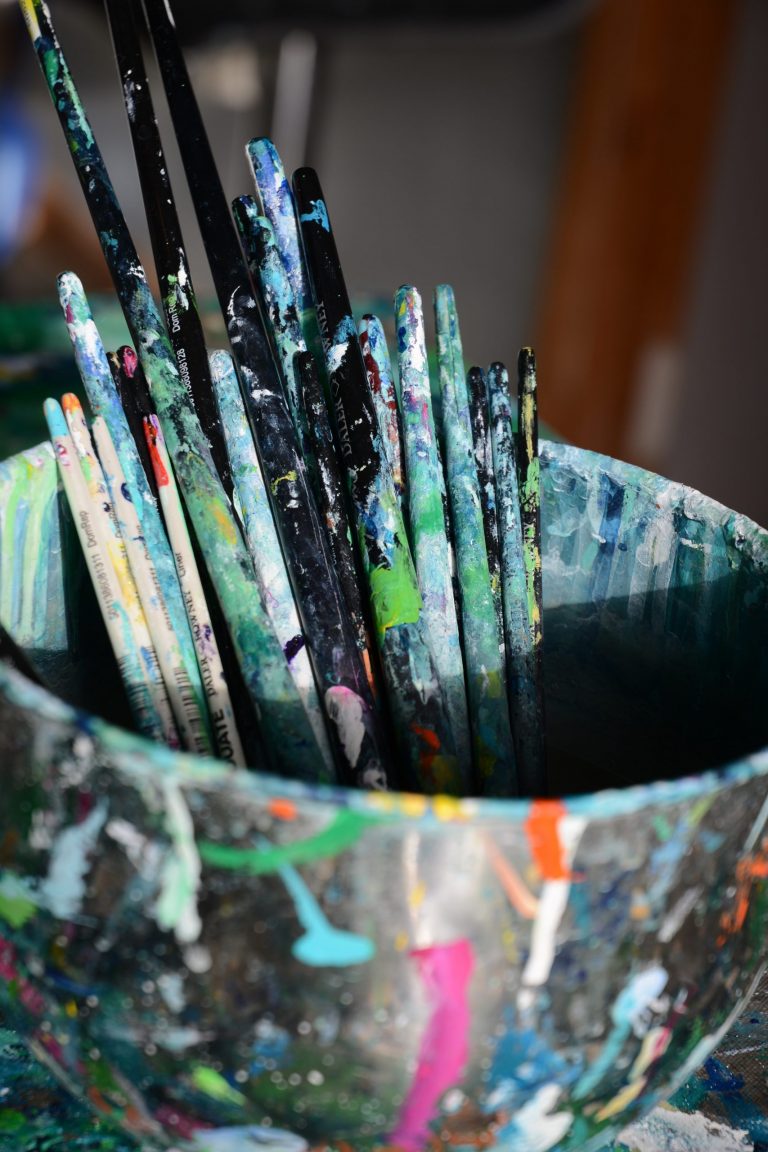It’s a fascinating question for new and experienced oil painters: What are the best surfaces for oil painting? Or, to use the famous painters’ parlance, what “support” should you paint on when you work with oils?
While the default answer is “canvas,” there are in fact many backgrounds that will nicely support your oil painting. They include hardboard, cardboard, paper or even a wall. Your options range from the free to the prohibitively expensive, and different surfaces naturally have varying characteristics that lend themselves to different painting experiences.
So, before you default to the tried-and-true, or dismiss any one support option out of hand, read on to discover the pros and cons of the seven most common backgrounds. Ultimately, only you can answer the question of what surface is right for YOUR oil painting.
What is oil paint?
Before you chose the right surface for your work, it’s wise to understand your medium.
As its name suggests, oil paint is made, from, well oil. Historically, artists mixed natural ingredients with oil to produce, experimenting with their “recipe” until they found the ideal hue. But artists no longer concoct blue from ground lapis lazuli or reds and pinks from beetles. Today, teams of chemists produce standardized colors, and most artists buy these synthetic pigments ready-made in a tube.
Each color has a slightly different fluidity. For example, white takes minimal pigment while deep reds and blacks require more. So the oil-to-pigment mix can vary widely. Moreover, vast price differences usually reflect the quality of the pigment. And some artists will mix their own to get the right consistency for their work.
There’s more than one kind of oil paint
The next thing to consider is that there is more than one kind of oil paint. Like surfaces themselves, different oil paints lend themselves to varying styles of expression.
Oil-based house paint
The American Abstract Expressionists made household paint popular. Large canvases required a lot of paint, so the answer came in tins from the local hardware store. Who can forget those great films of Jackson Pollack flicking paint directly from tins onto canvas?
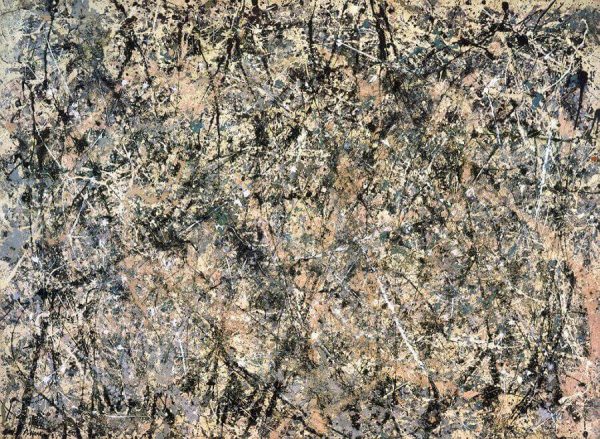
Enamel oil paint
In contrast, enamel is a very versatile paint that works well on woods and metals. While you’ll most often find commercial-grade enamel paint on exterior surfaces, such as metal fences, some artists appreciate its durability and high-gloss sheen. In fact, even the great Picasso used boat enamel in some pieces.
Spray paints
Graffiti artists favor the aerosol cans of spray paint because it is thinner than traditional oil paints and is sticky enough to adhere to unprimed surfaces. Before Banksy, New York-based Jean-Michel Basquiat and his SAMO art movement pioneered street art before turning to gallery walls.
Your chosen surface may depend on budget, but also on the type of oil paint you want to use.
The Seven Most Common Surfaces for Oil Painting: Pros and Cons
Just as there are varying types of oil paint, you have a number of surfaces to which you can apply that paint. Of course, your chosen background will depend on budget, the type of oil paint you want to use and the effect you hope to create.
Canvas: the enduring choice
Canvas has sustained its popularity as a support for oil painting for centuries simply because it’s such a sympathetic surface for oils. The enduring vibrancy of Renaissance masters’ reds and blues proves that canvas is highly effective at “holding” the paint.
Interestingly, the word canvas does not refer to any specific material in the field of textile fabrics. Instead, it applies to several closely woven materials of relatively coarse fibers. To make a canvas, you stretch the fibers — whether hemp, cotton or linen — on a wooden frame until taut.
You can buy canvases that are pre-stretched and ready to use. Or, you can also stretch and prepare your own. If you opt for the DIY route, art supply stores sell unprimed canvas by the yard and stretchers in pairs, allowing you to customize the canvas size.
Fine Weave vs Course Weave Canvas
Many novice oil painters may not be aware that canvases come in varying weaves — from fine weave to very coarse. Generally speaking, if you’re expecting to use broad and heavy brushwork, a coarse weave is likely to make sense. In contrast, for detailed work, a finely woven texture will be more suitable.
Dutch master Vermeer was one of the first to use canvas, as opposed to the board favored by the Dutch and Flemish masters of the time.
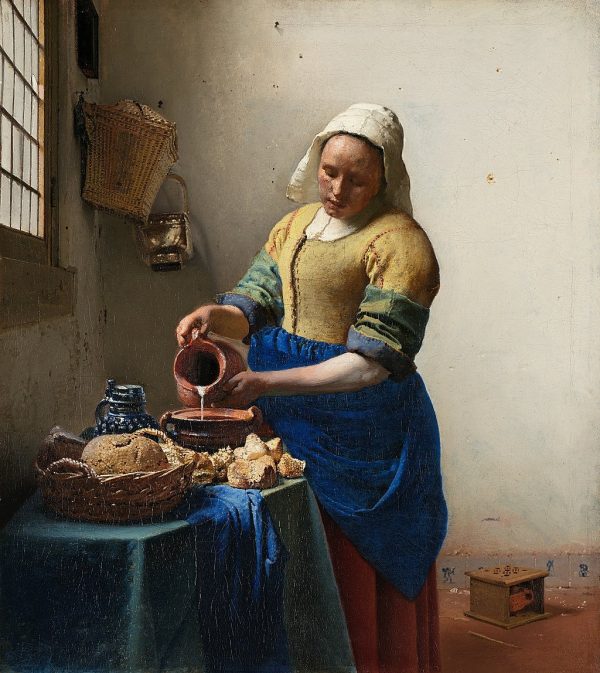
Linen vs Cotton Canvas
Another critical distinction to make is between cotton and linen canvas. As the cheaper of the two options, cotton canvas is almost certainly your best bet if you are an inexperienced painter, not least because it stretches very easily. Linen is expensive, but many artists prefer its strength, durability and longevity. Further, it’s simply a more pleasant surface on which to apply paint. That’s particularly true if you use thin painting techniques, such as stumble, favored by artists such as Francis Bacon, to blur outlines or edges.
Canvas board
Suited to more minor works you intend to frame, ready-prepared canvas boards are readily available from art supply stores. You can purchase them with a range of surfaces. Although the more expensive ones are naturally the best, the cheaper ones — even if they can sometimes have a coarse and greasy surface — perfectly adequate for experimentation when you’re just starting out.
Canvas vs Canvas Board: Make sure your surface is primed
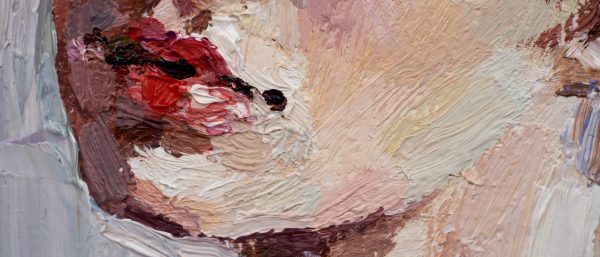
Priming creates the perfect surface to apply paint. Often now, gesso (a chalk-based primer) is used. However, it was once made from a rabbit skin glue (called size). Its job is to penetrate and fill the open pores of the canvas.
Ready-made canvases will usually come ready-primed. But you might want to make your canvases from scratch (especially if you are looking for a particular size or shape), you’ll need to build a frame and stretch the canvas across it. Several layers of size or primer is then applied to the so-called stretchers to tighten the canvas further.
Board
A common alternative to canvas, wood boards offer a number of advantages. If you don’t want to spend too much on the surface for your oil painting, but you’re looking for such characteristics as strength and lightness, try wood. You can purchase hardwood directly from any builders’ suppliers or timber yard. Better yet, they’ll usually cut it to size for you at no additional cost. And you can also try plywood and medium-density fiberboard (MDF), although these are often heavier.
However, while both the smooth and rough sides of the hardboard can be painted on, the rough side will only work if you intend to apply the paint thickly.
Like canvas, you’ll want to prime fresh cut board. Simply using a watered-down acrylic – or water-based paint.
Paper
You may think of paper only for quick sketches, using pencil, charcoal or ink. But the right kinds of paper have slightly absorbent qualities that enable the paint to dry rapidly, making it a viable (and sometimes desirable) surface for oil painting as well.
How to stretch (strengthen) paper
If using a simple paper, you will need to give it strength. Follow these steps before you pick up your paint brush:
- Tape down your paper (stretch it) on a drawing board. Use tape that is easily removed, like masking tape.
- Brush the paper with a wet brush. This removes some of the paper’s absorbency and makes it better able to take paint without buckling or tearing.
- Allow the paper to thoroughly dry.
- Carefully remove the tape, and your paper is ready to use. TIP: Add a small amount of water-based paint to the water to create a tinted background.
This DIY approach to stretching your paper isn’t to everyone’s taste. In fact, it can be as unpleasant to work on as the cheaper canvas boards mentioned above. That said, some artists are liberated by a surface that doesn’t leave them feeling the need to be too “precious” about preserving it in the best possible condition.
Although priming paper is an age-old method, there are ready-made options. You can buy a good-quality, heavy watercolor paper or even dedicated oil sketching paper that has already been specially prepared. These simple alternatives are typically available in pads at an art supply store.
If your oil on paper is for keeping, you will need to get It framed. It’s unlikely to hold up using glue and pins.
Best paper for oil painting
To help you narrow down which paper is best for oil painting, we put together a separate guide with paper types and brands we like. While it’s not an exhaustive list, it’s an excellent place to kick off if you’re starting out with this versatile medium.
Cardboard
Canvas and even wood can be precious surfaces for painting, so I can often be found painting on scraps of everyday brown cardboard harvested from packaging. And as well as being free and eco-friendly, it has a unique surface that you can find yourself becoming addicted to. The board quickly absorbs the oil in the paint, allowing a more textured, thicker application, perfect if you prefer a palette knife.
Not convinced? Try my trick:
- Squirt a spot of oil paint. Try a more fluid paint, like white which has less pigment.
- Cover loosely with plastic or Saran wrap and leave it under plastic for a day or two. The plastic will prevent the paint from developing skin.
- Check on the paint over the next few days. Oil will have seeped out of the paint and left an oil stain on the cardboard, changing the pain texture from fluid to viscous.
- You can then leave the paint until you have a perfect consistency.
Even if you prefer a more rarefied surface, cardboard makes an excellent (and free) palette board. And the above trick is great if you work with knives rather than brushes.
Stone, brickwork and plaster
From cave paintings to Leonardo da Vinci’s Last Supper and Banksy’s recent work on the walls of war-torn Ukraine, the mural is a timeless work of art. Unfortunately, stone, plaster and brickwork can be incredibly challenging surfaces for creating in situ artworks.
As we would expect from the genius Leonardo da Vinci, he experimented with painting methods for his Last Supper, painted around 1495 in a monastery in Milan. He used oil paint and tempera (a mix of pigment and egg yolk) painted directly onto the stone wall. Five hundred years later, it remains, but his experimental style has made it incredibly fragile.
Efforts continue to slow its deterioration, even as the mural slowly loses the luminous color and studied facial expressions it is so famous for.
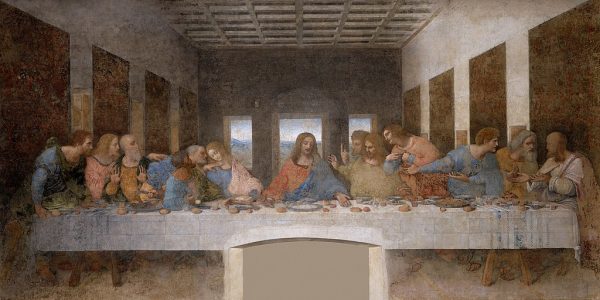
Metal
A relatively new painting surface, metal has its problems. One of the things we know about canvas and wood is that the paintings last. With metal surfaces, it is less certain that the paint will still adhere to the surface in a century, let alone a millennium.
Despite this, artists have begun to embrace aluminum panels. Metal is non-porous, so traditional oil paints have been replaced by enamels (which are also oil-based and have a thicker consistency).

Aluminum
British artist Gary Hume uses regular household gloss (oil-based) paint on aluminum panels. But don’t confuse aluminum for a budget option. What you save in using household paint, you lose with the relatively expensive aluminum panels. Expect to pay more than $150 per yard.
Unlike wood and canvas, which can mold, metal is vulnerable to oxide (rust). So aluminum is a fragile painting surface despite its general strength. Some artists have had to revisit their work to repair surfaces.
Choosing the right surface for you
Most artists start with an assumption of tubes of paint and ready-made canvases, but all artists should experiment as much with medium and surfaces as they should with style and subject matter.
Find your perfect match with our short round-up of all the surface choices for your oil painting:
#1: Paper
This is a great surface for those who tend to paint thinly. Paper can be strengthened, but it can only take so much weight. So if you like your paint heavy and plentiful, paper is not for you.
#2: Canvas
Ready stretched and primed, this is a great all-rounder if you don’t have the space, expertise, or inclination to stretch your own canvases. It works with both acrylic and oil paint. TIP: paint the surface in watered-down acrylic paint to avoid the white canvas coming through your work.
#3: Linen
Linen is an expensive surface, really only suited to fine work. Consider both the size of your brush head and your style.
#4: Canvas board
Cheap and ready to use, canvas is great for smaller work, like still lifes.
#5: Plaster, stone and brick
Painting directly onto a wall requires confidence, a steady hand an a particularly sticky oil paint.
#6: Metal
A fairly new surface, early indications suggest it might not have the staying power of more traditional surfaces.
#7: Wood
MDF sheets, hardwood or plywood are all great surfaces for oil painting. TIP: Consider the size of the surface, as all three can be very heavy to hang on walls.
Showcase Your Oil Paintings with a Stunning Website
Developing your unique oil painting style doesn’t have to be expensive. Just follow our steps for finding the right surface for YOUR work.
And if you’re wondering where to display your fabulous oil paintings, consider building a free website with Artweb.

